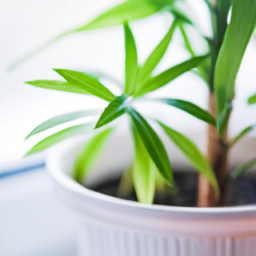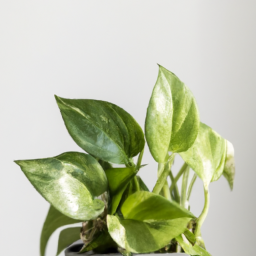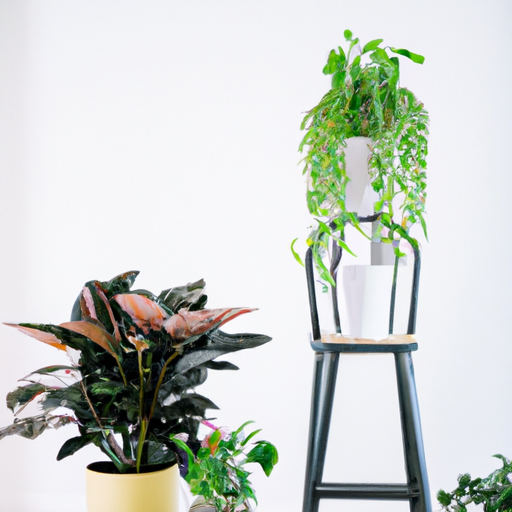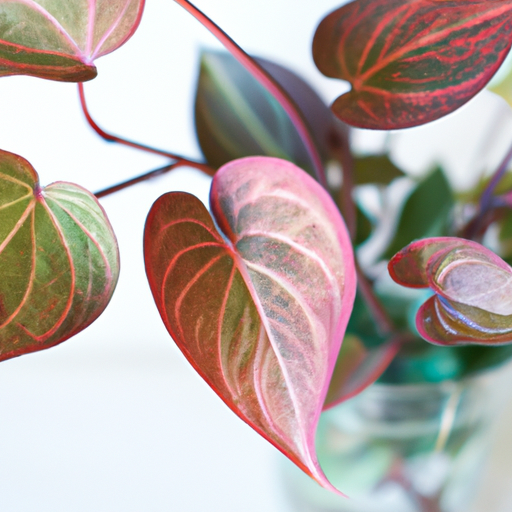
Have you ever thought about adding some greenery to your living space but don’t have much room for large plants? Look no further than the versatile and charming window plant. These plants are perfect for adding a touch of nature to your home without taking up precious floor space. Whether you have a sunny windowsill or a shady corner, there is a window plant that will thrive in your space. In this blog post, we will explore the different types of window plants available and offer tips on how to care for them to ensure they stay healthy and vibrant. So, let’s dive in and discover the beauty of window plants!
Benefits of Having Window Plants in Your Home
Welcome to the wonderful world of window plants! Adding greenery to your home not only enhances the aesthetics but also brings a plethora of benefits for your health and well-being. In this article, we will explore the various advantages of having window plants in your living space.
Improved Air Quality
One of the primary benefits of having window plants in your home is the improved air quality they provide. Plants naturally absorb carbon dioxide and release oxygen through the process of photosynthesis. This helps to freshen up the air in your home and remove harmful toxins and pollutants.
Furthermore, certain plants have the ability to purify the air by removing volatile organic compounds (VOCs) such as formaldehyde, benzene, and trichloroethylene. Spider plants, peace lilies, and snake plants are excellent choices for improving indoor air quality.
In addition to releasing oxygen and purifying the air, window plants also help to increase humidity levels, which can be beneficial for your respiratory health, especially during the dry winter months.
Reduced Stress and Anxiety
Another wonderful benefit of having window plants in your home is the positive impact they have on your mental well-being. Studies have shown that being around plants can help reduce stress, anxiety, and depression.
The presence of greenery has a calming effect on the mind and can help promote relaxation and a sense of tranquility. Simply looking at plants or tending to them can have a therapeutic effect, allowing you to unwind and de-stress after a long day.
Incorporating window plants into your living space can create a peaceful and serene environment that promotes mindfulness and overall emotional well-being.
Enhanced Productivity and Creativity
Having window plants in your home can also boost your productivity and creativity. Research has shown that being surrounded by plants can improve cognitive function, concentration, and memory.
Plants have a visually stimulating effect that can help spark creativity and inspire new ideas. Whether you’re working from home or pursuing a creative hobby, having greenery around you can enhance your focus and motivation.
Furthermore, caring for window plants can instill a sense of responsibility and nurture your sense of accomplishment as you watch your plants thrive and grow. This sense of achievement can translate into increased confidence and motivation in other areas of your life.

Introduction
Window plants are a great way to bring nature indoors and add a touch of greenery to your living space. Whether you have a green thumb or are new to gardening, there are plenty of plant varieties that thrive in indoor environments and can be easily grown on a windowsill. In this article, we will explore some of the top window plant varieties for indoor gardening.
Spider Plant
The spider plant, also known as Chlorophytum comosum, is a popular choice for indoor gardening due to its easy care and air-purifying qualities. This plant features long, arching leaves that are striped with white or yellow, adding a pop of color to any room. Spider plants thrive in bright, indirect light and can tolerate some neglect, making them perfect for beginners.
To care for a spider plant, place it in a well-draining potting mix and water it when the top inch of soil feels dry. Spider plants also benefit from occasional misting to increase humidity levels. These plants are known for producing baby spider plants, or “spiderettes,” which can be propagated and grown into new plants.
Overall, spider plants are a low-maintenance and visually appealing addition to any indoor garden. With proper care, they can thrive for years and continue to brighten up your living space.
Pothos
Pothos, or Epipremnum aureum, is another popular window plant variety that is beloved for its trailing vines and easy care. This plant features heart-shaped leaves that come in a variety of colors, including green, golden yellow, and variegated patterns. Pothos plants are known for their ability to purify the air and thrive in low light conditions, making them ideal for window sills with limited sunlight.
To care for a pothos plant, place it in a well-draining potting mix and water it when the top inch of soil feels dry. Pothos plants prefer indirect light but can also tolerate low light conditions. These plants are resilient and can bounce back from neglect, making them a great choice for busy plant owners.
Pothos plants can be easily propagated by taking stem cuttings and rooting them in water or soil. With proper care, pothos plants can grow long, lush vines that add a touch of greenery to any indoor space.
Succulents
Succulents are a diverse group of plants that come in a wide range of shapes, sizes, and colors, making them a popular choice for indoor gardening. These plants are known for their fleshy leaves and ability to store water, allowing them to thrive in dry indoor environments. Succulents come in many varieties, including echeveria, jade plants, and haworthia, each with its own unique characteristics.
To care for succulents, plant them in a well-draining potting mix and place them in a sunny window where they can receive at least 6 hours of sunlight per day. Water succulents sparingly, allowing the soil to dry out between waterings to prevent root rot. Succulents are low-maintenance plants that require minimal care, making them perfect for busy plant owners.
Succulents can be easily propagated by taking leaf or stem cuttings and rooting them in soil. With proper care, succulents can thrive and produce new growth, adding a touch of desert beauty to your indoor garden.

Tips for Caring for Window Plants in Different Seasons
Spring
As the weather warms up in the spring, it’s important to adjust your care routine for your window plants. One key aspect of caring for window plants in the spring is to increase watering frequency. With the increase in temperature, your plants will likely require more water to thrive. Make sure to check the soil moisture regularly and water as needed.
In addition to watering, spring is a great time to repot your window plants if they have outgrown their current containers. This will give them more room to grow and thrive. When repotting, be sure to use a high-quality potting mix that is well-draining to prevent root rot.
Finally, spring is also a good time to fertilize your window plants. Choose a balanced fertilizer and follow the instructions on the package for best results. Fertilizing will provide your plants with the nutrients they need to grow strong and healthy throughout the spring season.
Summer
During the hot summer months, it’s important to pay close attention to the needs of your window plants. One key aspect of caring for window plants in the summer is to provide adequate sunlight. Make sure your plants are getting enough light, but be mindful of direct sunlight that can cause sunburn.
Another important aspect of caring for window plants in the summer is to increase humidity levels. The dry summer air can be tough on plants, so consider misting your plants regularly or placing a humidifier nearby to increase humidity levels.
Lastly, be sure to keep up with your watering routine in the summer. With the heat and increased sunlight, your plants may need more water than usual. Check the soil moisture regularly and water as needed to keep your window plants happy and healthy.
Fall
As the temperatures start to cool down in the fall, it’s important to adjust your care routine for your window plants. One key aspect of caring for window plants in the fall is to reduce watering frequency. With the decrease in temperature, your plants will likely require less water to thrive.
In addition to watering, fall is a great time to check for pests on your window plants. The cooler weather can attract pests looking for shelter, so be sure to inspect your plants regularly for any signs of infestation. If you do find pests, treat them promptly to prevent further damage to your plants.
Lastly, fall is also a good time to bring your outdoor window plants indoors before the first frost hits. Make sure to acclimate them to their new indoor environment slowly to prevent shock. Once indoors, adjust your care routine as needed to keep your plants healthy throughout the fall and winter months.
Crisp Recap
Are you looking to bring a touch of nature into your home but don’t have a lot of space? Consider adding a window plant to your decor! Window plants are a great way to bring the outdoors inside, even if you’re short on space. These plants are perfect for adding a pop of greenery to any room, and they can thrive in the natural light that comes through your windows.
Window plants come in all shapes and sizes, so you’re sure to find one that fits your style and space constraints. From small succulents to trailing vines, there’s a window plant for every taste. Plus, caring for a window plant is relatively easy – just make sure to water it regularly and give it plenty of sunlight. So if you’re looking to add some greenery to your home without taking up too much space, consider adding a window plant to your collection!
Here are the top questions that we were asked:
Q1. What are some popular window plants?
A1. Some popular window plants include succulents, pothos, spider plants, and aloe vera. These plants thrive in natural light and are easy to care for indoors.
Q2. How should I care for window plants?
A2. Window plants require regular watering, adequate sunlight, and occasional fertilization. Make sure to check the specific care instructions for each plant to ensure they thrive in your window.
Q3. Can I grow herbs in my window?
A3. Yes, many herbs such as basil, mint, and parsley can be grown in a sunny window. They not only add greenery to your space but also provide fresh herbs for cooking.
Q4. Do window plants help improve indoor air quality?
A4. Yes, window plants can help improve indoor air quality by absorbing carbon dioxide and releasing oxygen. They also help remove toxins from the air, creating a healthier environment.
Q5. How do I prevent my window plants from getting too much sunlight?
A5. To prevent your window plants from getting too much sunlight, you can use sheer curtains or blinds to filter the light. You can also rotate your plants regularly to ensure they receive even sunlight exposure.
Emily Bloomfield is an interior designer and horticulturist specializing in incorporating indoor plants into interior spaces. With a background in both design and plant science, Emily offers a unique perspective on creating harmonious living environments through the synergy of greenery and aesthetics. Her creative ideas and innovative solutions make her a sought-after authority in the field.


